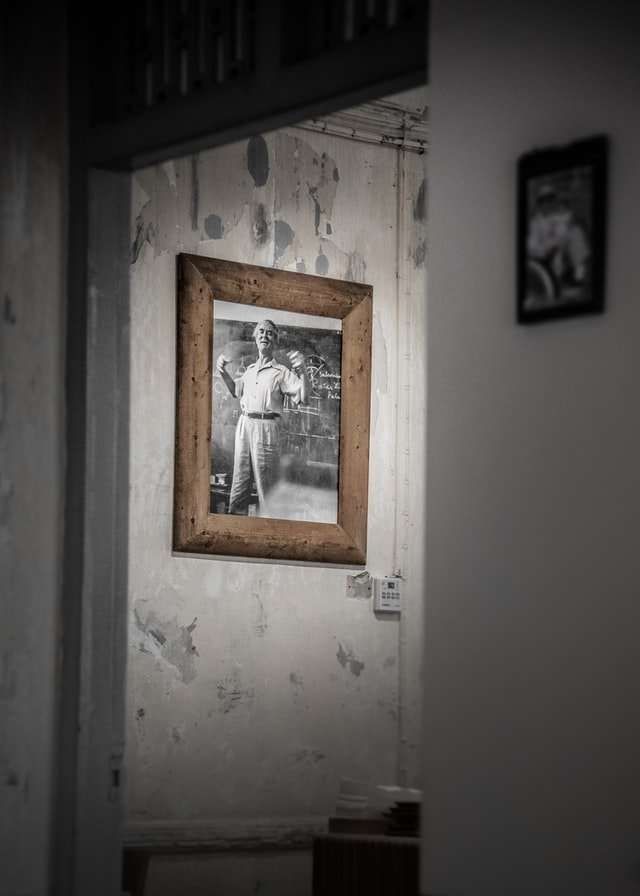This is not a piece of art I can understand. I can’t understand it because I don’t feel it, and I don’t feel it because I don’t understand it. And this is the way you should feel about every piece of art you encounter. If a piece of art makes you feel a certain way, then that’s the best possible reason to consume it; if it doesn’t make you feel that way, then there’s no point in consuming it.
Art is not for amusement or decoration or inspiration. It is for feeling. It is for having an experience, which means having an emotion. You can have this emotion by sitting in a chair and thinking about what the artist was trying to say, or by going to the museum and looking at the picture on the wall, but either way, you are having an emotion about what the artist was trying to say.
This might sound like a tautology: Art is that which conveys emotion; ergo Art is emotion conveyed. But most people don’t really believe this. They think that art could be anything: a representation of a tree, a list of numbers, an arrangement of colored dots on a screen—as long as it’s “interesting” they consider it good art. It doesn’t
Art is all about emotions and feelings. It is about how a piece of art makes you feel. The feelings it evokes in you is what Art is all about because that’s what makes people want to buy it.
To really understand art, you have to think about how a certain piece of art makes you feel. Because if you can’t understand the feelings that a certain piece of art brings out in you then you will never be able to tell other people why they should buy it.
All of this applies whether the piece of art is a sculpture or painting, a poem or song. What matters is how it makes you feel, not what its subject matter is, or even if there is any subject matter present at all.
When you look at a piece of art, what do you feel? I mean, besides hunger.
Art is just another kind of interaction between people. Someone made it; someone looked at it. It’s a conversation between those two people — and others.
When you look at a piece of art, you’re not just looking at the artist’s skill. You’re also seeing their hopes and fears, their ideas about what’s important and why, even their sense of humor (however dry). Art is a window into its creator’s soul.
And that leads us to the fundamental difference between art and science: science is about how things work; art is about how things feel.
Science explains how things happen. It uses reason to strip away the inessential complications until we can see the essential forces at play: gravity, electromagnetism, or whatever else we need to know about.
Scientists try to avoid value statements entirely, because they don’t want to bias their arguments with subjective judgments. But when you strip away everything that isn’t essential — everything except the pure physics — there will still be something left: a human being interacting with the universe around him or her. A person will be making decisions about what kinds of interactions are worth studying and which
Artists and critics alike have long tried to describe what art is and how it works. When you look at one of their explanations, though, you find that they are often saying almost the opposite of what they seem to be saying.
Art is not a mirror held up to nature, we are told; it is an expression of the artist’s thoughts, feelings and sensations. Nor is it a commentary on the world; rather it creates a parallel world whose meaning must be intuited by each viewer. But these languages are not so different as they might sound.
Because every piece of art was made by someone with a specific intent and in a specific context, it would be hard to say what its meaning is without also describing its origins and how it came to be made. It was made in order to express something, but what?
It was made for some purpose — but what? You can’t know how a piece of art feels unless you know who the artist was, what he hoped to accomplish with his work and why he chose exactly this way of accomplishing it. If you want to understand why the Mona Lisa is so captivating — or so mysterious — you need to know about Leonardo da Vinci’s life, interests and personality as well as his artistic
To understand something is to place it within a pattern of explanation. The pattern is what you’ve got when you understand something.
I think that when art is considered as a human product, as it should be, and not as a divine one, all its effects are included in the word “feeling.” This word must then include not only the emotions, but also the sensations, and even the physical impulses. The feeling produced by a work of art is that which results from an elegant combination of all these elements of our nature.
The specific effect to be studied depends on what kind of thing the art is; it varies accordingly with the content, the form, and the character of each type of art. But all have a single aim: to produce a feeling.
The two great needs of man—emotional expression and aesthetic pleasure—are thus fulfilled at once by this marvellous means. By producing an agreeable feeling it gives us pleasure, and by expressing its content it enables us to communicate our emotions. It is therefore an essential element in social life.



